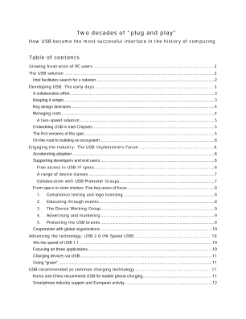How USB Became the Most Successful Interface in Computing History
Growing frustration of PC users
Today, the least tech-savvy consumer can attach printers, scanners, cameras, and other peripheral devices to PCs easily, simply by plugging them into the ubiquitous Universal Serial Bus (USB) ports found on every platform. But in the early 1990s, things were anything but “plug and play.”
The back of the PC told the story. There were ports of different
sizes and shapes, each dedicated to a single type of peripheral—one for a mouse or keyboard, another for a printer, others for joysticks, modems, and audio devices. They were all shaped differently and used unique protocols. These ports also limited the number of devices users could connect to their PCs; to add a second printer, for instance, users had to remove the first. And there was no place to plug in devices such as scanners, cameras, and external storage drives.
“If you wanted to connect a more advanced peripheral device, such as a scanner, you had to open up the PC and plug in a SCSI card, and there was a lot of end user confusion about how to do this,” says Bala Cadambi, who was an I/O architecture manager at Intel at the time. “A card might come with the scanner, or you might have to purchase it. You’d disconnect power, open the desktop computer and plug in the card, but then you’d have to configure it in the system, and this was very difficult to do. And it didn’t usually work the first time you tried; often you’d find conflicts so that if one device worked, another stopped working, and you had to figure out how to get back the functionality you lost.”
